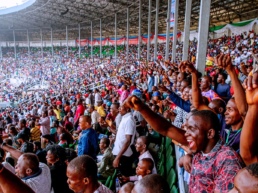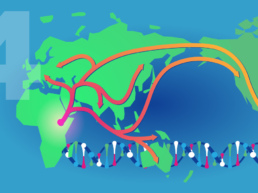Obinna F. Muoh.
From the student in a rural town somewhere in Nigeria that is literally burning the mid-night oil to the industrialist whose cost of production puts her in an untenable market position, the socio-economic life of every Nigerian has been affected in no small measure by the upheavals in the power sector. When one considers the importance of electricity to modern life, it is understandable that Nigerians from all walks of life, rich and poor, old and young are frustrated with the user experience. Despite the less than ideal circumstances, Nigerians are expectant.
In the 21 st century, it is certainly not farfetched to expect that as night falls, that by the simple flick of a switch, one can confidently illuminate the darkness without the nightly cacophony of generator engines disrupting the evening quiet.
Nevertheless, in spite of the myriad of election year promises of power for all, reports commissioned, and targeted intervention programs implemented since the early 1970s, the Country has registered very little progress relative to where it ought to be. Therefore, in those instances where our expectations inevitably confront the daily reality of power rationing, grid collapse, exorbitant fuel costs, lack of electricity metering, and tariff increases a potent brew of disillusionment and pessimism overwhelms the polity, promising a strong hangover to boot. With ninety five million Nigerians currently without access to electricity, the promise of power for all has largely been a mirage of sorts.
The fits and starts observed during the ongoing revitalization of the Nigerian power sector after many years of chronic neglect is in many ways analogous to the experience of a middle-aged person attempting to re-engage the formal education system after many years of chronic truancy. Folks that have had to begin their educational pursuits anew understand that tackling grade school during adolescence is an entirely different proposition compared to attempting such at the age of forty, when the demands of a job, family life, and other socio-economic commitments jealously compete for one’s time. The opportunity cost experienced reflects competing resource demands that surely require difficult tradeoffs.
Let me be clear, the argument here is not so much that the country has aged and consequently is unable to tackle this particular challenge. Far from it, that argument would in fact be nonsensical and for good reasons invite charges of ageism. Rather it is saying that by failing to make the necessary investments required to keep up with the increase in electricity demand over the last thirty years the Nation is now faced with a seemingly intractable situation. A situation where reversing the tremendous deficit in electric power supply will require much steeper economic and cognitive costs. This is at a time when similarly scaled investments are needed in education, agriculture, national security, and healthcare.
The industry figures also help tell the story of where the Country is relative to where it ought to be. Nigeria presently has an installed power generating capacity of 12,522.0 MW, available operating capacity of 3,879 MW, and transmission capacity of 5,300MW. Owing to gas supply problems, significant transmission & distribution losses, a lack of maintenance, infrastructure sabotage, and poor water management only 1,864 MW or 25% of installed capacity is distributed to consumers per the Federal Government’s own data. The transmission and distribution network are also threatening to be a major bottleneck. On the 31st of March 2016 the power sector suffered a system collapse, which resulted in a national grid output of zero megawatts of power for a three hour period. When grid power is available, only 45% of Nigerians have access to it, but much of that supply is epileptic and of very poor quality.
According to the World Bank’s 2014 Statistics Nigeria has an estimated population of 178M people. When compared to South Africa, which has a population of 53.6M and an installed generating capacity of 44,000 MW of electricity, the scale of the challenge facing Nigeria begins to come to the fore. More so, given that South Africa’s current electricity consumption per capita is approximately 4,800 kwh/person/year, an equivalent power consumption level for Nigeria, which currently consumes 126 kwh/person, given its population would be 98,000MW. Though this is a rough estimate, it however confirms the severity of the power generation gap. Nigeria is Africa’s largest economy with a GDP of $521.8 billion, while South Africa is second with $350.6 billion.
According to the Federal Government’s 2010 Power Reform Roadmap Report, Nigerians spend over twice as much on self-generated light and power, using candles, diesel, and petrol as they do with grid-based electricity. More so, it is estimated that at a minimum 6000MW is generated using petrol and diesel generators. This mode of self-generation represents a financial albatross on Nigerians equivalent to between $6.7 and $10.47 billion compared to grid-based power. This is not counting the premature deaths and chronic ailments resulting from breathing polluted air.
To address the situation, the Country previously set for itself a target of generating 40,000MW within a 10-year period starting in 2010. This seemingly modest target for generating capacity alone, according to the Government’s Roadmap for Power Sector Reform will require an investment of $3.5 billion per annum over a 10-year period. When you consider the entire value chain that includes generation capacity, transmission, and distribution, the effort will require $10 billion per annum over 10-years. Nigeria’s proposed 2016 Federal Budget is $21.3 billion. Therefore, the yearly cost to achieve what is in fact a very modest goal of 40,000MW over a 10-year period equals a one half of the Country’s annual budget. The 2016 federal budget proposes the sum of $1.4 billion for power sector capital expenditure. Additionally, owing to missed milestones and exigencies, the initial target of 40,000 MW by the year 2020 has also been revised down to 20,000MW.
Although the government’s privatization effort was a step in the right direction, with the backdrop of falling oil revenues, it cannot be expected to shoulder the financial responsibility on its own. The magnitude of this challenge calls for an all hands approach, especially concerning long-term capital formation, technical expertise, and innovative business models to reduce the delivered cost of electricity.
The issue of capital formation is especially pertinent considering the enormity of the costs involved and the limits of the Federal Government and the indigenous Capital Market (Nigerian Stock Exchange) as a resource for such. The Federal Government is facing dwindling oil revenues and the Nigerian Stock Exchange, with a market capitalization of approximately $35.26 billion, simply does not have the depth and breadth required to spearhead capital formation at this scale. The industry needs stable policies and appropriately structured and varied cost recovery instruments to attract and sustain participation from both foreign and indigenous investors.
One of the instruments for cost recovery available to investors is the tariff charged to electricity consumers. This must be appropriately structured to attract capital currently sitting on the sidelines without being unnecessarily burdensome to consumers. The public outcry following the recent tariff hike (45%) underscores the need to also address the significant information asymmetry between Operators, Policy Makers, Consumers, and their Representatives. Since addressing this challenge will require a consistent and focused effort over a long period, the best possible way to ensure that efforts at ameliorating the situation do not fall short of success is through a well-informed and engaged citizenry. An engaged and patriotic citizenry attuned to their responsibilities regarding timely payment of electric bills and abstaining from acts of vandalization will help ensure that the industry remains economically viable and attractive to investors.
Despite the laundry list of challenges and the very little progress made thus far, this is not the time to be caught middling. The stakes are just too high. With Nigeria’s population projected to exceed four hundred million by 2050, the next thirty-four years have to be markedly different from the last thirty. To keep up with the annual population growth rate of 2.54%, the country should set for itself a target of 11,000MW of new generating capacity yearly; however, this is just the first step. As noted earlier, there are equally important challenges and constraints, like capital formation and a tariff structure, that have to be addressed to ensure that the hopes of expectant Nigerians are not dashed on the jagged surface of disappointment.



